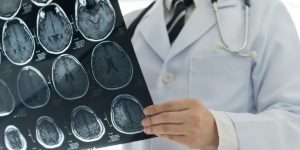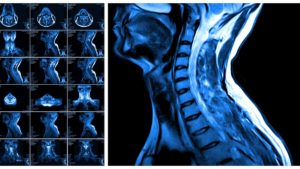 MRI vs CT vs PET Scan
MRI vs CT vs PET Scan
In medicine there are many ways to investigate and diagnose a disease or disorder, however, using technology and imaging scans has helped advance the diagnostic process immensely and make the process more precise while giving a deeper insight into the human body. Starting with the discovery of the X-ray in 1895 there have been breakthroughs in imaging technology that allow doctors to detect life threatening diseases with incredible accuracy. There are a few common scans used in most hospitals and medical settings, but what are they and what’s the difference?
Imaging tests use state of the art equipment to create high quality images of the inside of the body. Three used frequently by doctors to assist in diagnosis are the MRI scan, CT scan and PET scan.
What is a CT Scan?
CT scans or Computed Tomography scans work very similarly to a simple X-ray, and in fact uses X-ray beams, but the machine encircles your body creating a 3-dimensional view from many different angles. The images taken are fed and stored in a computer, that created a cross-sectional image to detect bone and joint problems, as well as other internal problems such as bleeding, tumor and blood clots. CT scans are used in hospitals throughout the world and are an essential part of the modern diagnostic process.
Contrasting agents can be used in a CT scan to help show various structures of the body more clearly, such as the digestive system. Barium is consumed by the patient, which appears white as it travels through the digestive system, or a contrast agent can be injected into the veins if the goal is to examine the blood vessels of the area. CT scans are a source of radiation, however, so a radiologist will go over the risks and benefits of utilizing this imaging technique.
What is an MRI?
Magnetic resonance imaging (MRI) takes a look at the organs and tissues within your body by using a strong magnet and radio waves. MRI scans are used in a variety of ways, such as to examine torn ligaments and tumors, but are particularly useful when examining the brain, spinal cord, and nerve issues. The MRI doesn’t use radiation to generate its image, so it has less risk than a CT scan or X-ray. The image is starkly different than an X-ray, and can examine t issue in more detail, which is why they are more useful for nerve, brain and spinal examination.
issue in more detail, which is why they are more useful for nerve, brain and spinal examination.
These scans can be used with or without contrast dyes as necessary. You should let your doctor know i you have metal in your body, or any kind of metal devices like a cardiac pacemaker or artificial joints before considering an MRI.
What is a PET Scan?
The positron emission tomography (PET) specializes in checking diseases in the body using special dye with radioactive tracers. The tracer will assist in viewing which parts of the organs and tissues are working well and where diseased areas are concentrated. Certain diseases have higher level of chemical activity within the body, and the tracer will collect there, and thus show up as brighter areas on the PET scan.
PET scans can measure blood flow, oxygen use, how your body is using sugar and many other things. The general diseases its used for are cancer, heart issues, or brain disorders.
Difference between PET scan and MRI
PET scans show metabolic changes that occur at a cellular level in your organ or tissue, which is where diseases can first be detected. MRIs cannot view the tissue at this scale, but rather are useful for detecting larger changes in the organ or tissues. However, the scans can be combined in a PET-MRI scan or a PET-CT scan to create an even more detail three dimensional image for very precise diagnosis. The detection of an illness at a cellular level is useful for examining coronary artery disease, brain tumors, memory disorders and seizure disorders.
Your doctor will determine which scan, or combination of scans, is suitable to your symptoms for diagnosis.


